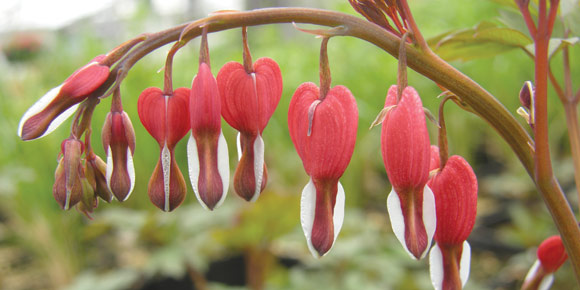Eggplants come from India and Eastern Asia where they have been grown since time immemorial. The first eggplants to hit Europe in the Middle Ages were white, hence the name “eggplant”.
In northern Europe eggplants were known as “mad apples” (mala insana) because it was believed that eating them would cause insanity. The French, for some unknown reason, call them aubergines, the root word of which (auberge) means inn. One of the great things about eggplant is its ability to pick up the taste of anything else it is cooked with, creating an interesting mélange of flavours when combined with other vegetables and spices.
Even today, eggplant has many aliases, including brinjal, susumber, guinea squash and poor man’s caviar. Along with these pseudonyms, eggplant comes in many guises. In addition to the traditional purple, it can be white, green, rose, yellow, red, orange or striped. In shape, it can be the traditional oval or global, egg-shaped, finger-shaped or cylindrical. Eggplant can be large, a pound or more in weight, or small, the size of a finger and many sizes in between.
Eggplants detest cold
Like peppers, eggplants are part of the Solonaceae family and require all the tender care of its relatives, only more so. Eggplants detest cold and need to be kept at temperatures above 21 degrees for the growing season. Too cool and you’ll get lots of leaves and no fruit.
Eggplants need rich soil and consistent watering to prevent blossom end rot and they are also subject to verticillium wilt, so crop rotation is recommended. Good planting companions include basil, lettuce and fennel. About three to four weeks before the first frost, pinch any new blossoms so that the plant will put its energies in ripening existing fruit.
Fifth Century Chinese women used to stain their teeth black as a beauty aid using a dye made from eggplants.
“Gretel” is a dwarf variety, produces a finger-like white fruit in 55 days. There are also yellow varieties and striped varieties.’ Millionaire’ is a Japanese variety with long black fruit, nearly seedless and matures in 60 days. ‘Ichiban’ is curved, long and thin about 60 days. ‘Calliope’ is striped white and purple, oval in shape and can be as small as two inches. It matures in 60 days.
Is my eggplant ready to eat?
A fresh eggplant should be firm and feel heavy in weight for its size. Its skin should be bright and glossy and should bounce back when pressed. Overripe or old eggplant will have tough bitter skin.
Garlic, basil, parsley, lemon juice, hot peppers and fresh cilantro are all excellent flavour enhancers for eggplant.
Eggplants contain only about 35 calories per cup and 2.8 grams of fibre. They are high in potassium, folic acid, copper, Vitamin B6 and magnesium.
Dorothy Dobbie is the founder and owner of Pegasus Publications Inc. She broadcasts a weekly garden show at CJNU 93.7 FM. Contact Jane at 204 940 2700 for subscriptions to Manitoba Gardener magazine, celebrating its 20th year in 2018.



